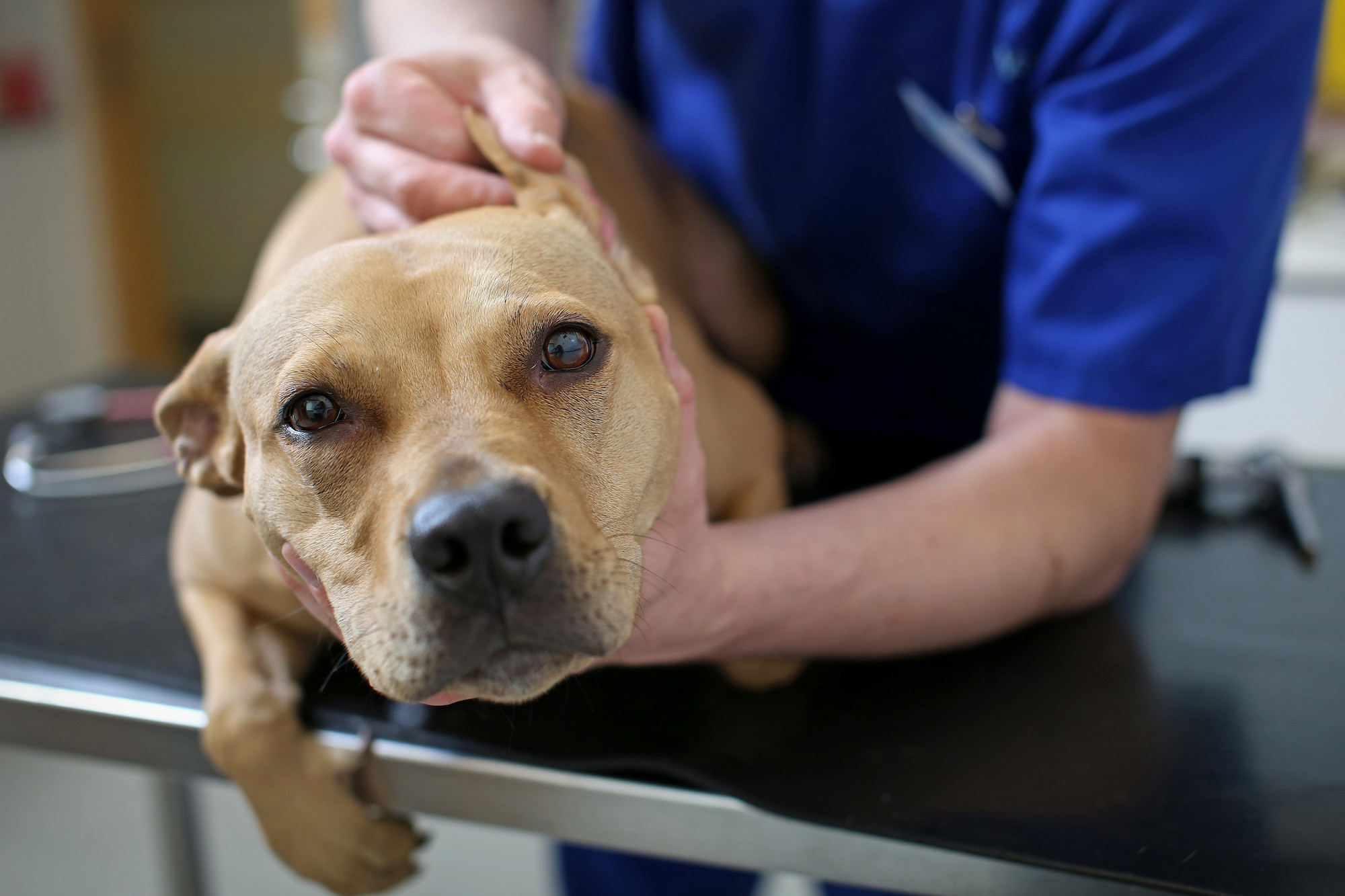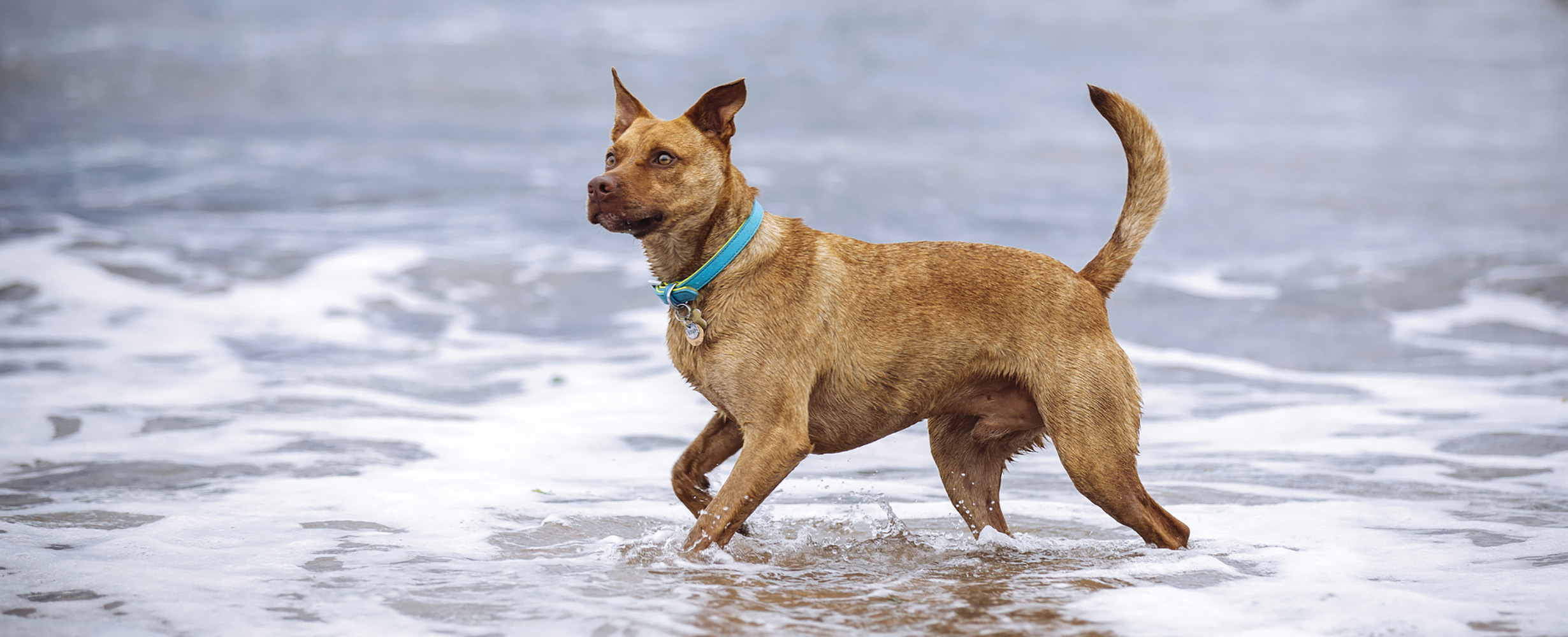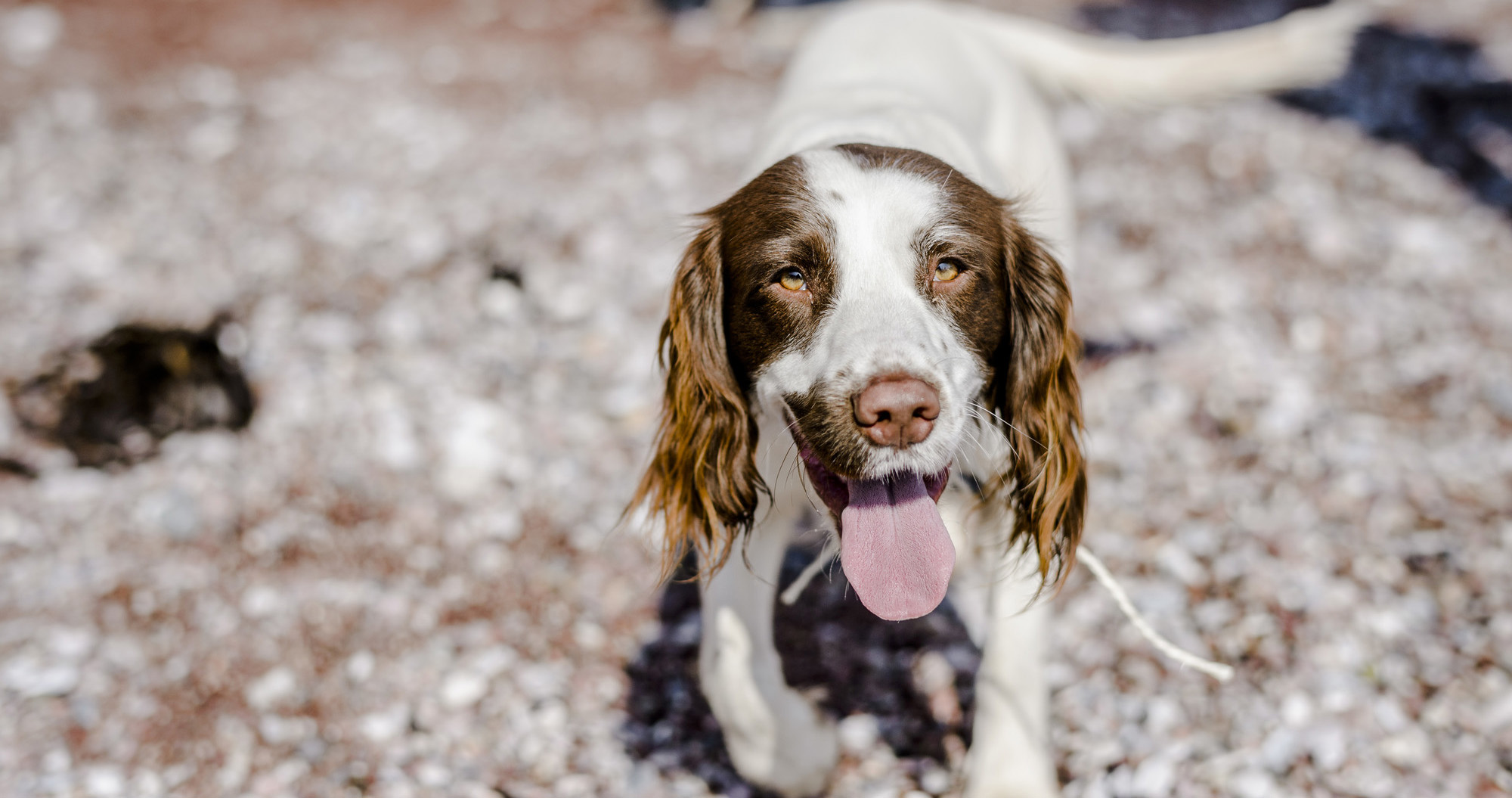
Skin cancer in dogs
- Dogs with light skin and/or a short or thin coat are particularly prone to skin cancer
- Skin tumours are the most common cancers found in dogs; not all types are caused by exposure to sun, but it is a leading cause
- Keeping your dog out of strong sunlight and using sunscreen can reduce the risk, but specially formulated creams should be used
- Check any suspicious growths on your dog as some can be fatal without early intervention
What causes skin cancer in dogs?
Skin cancer in dogs is often caused by exposure to the sun, but not all cases are linked to this. Dogs with light skin, a thin coat or a lack of fur are most at risk, especially if they have suffered sunburn at any point. Some studies show that compulsive licking of certain areas can also damage the skin and increase the chance of skin cancer and research shows that certain breeds of dog may have a genetic predisposition to the disease.
What does sunburn look like on dogs?
Sunburn can appear as red skin or hair loss. The most common areas affected are the bridge of the nose, belly, inside legs, ear tips, skin around the lips and any other area where skin pigmentation is low.
How do I protect my dog from sunburn and sun-related skin cancer?
Avoid letting your pet out in the sun at times of peak UV intensity, usually between 10am or 3pm, either by keeping them inside or ensuring that they remain in a well-shaded spot. If that is not possible, use sunscreen to protect their skin. Look for a specially formulated canine sun cream as these will be the safest and most effective, but if you are unable to find this, opt for one suitable for human babies instead. Check that it is fragrance-free, comes without an ingestion warnings, is non-staining and of an SPF of at least 15, ideally 30. Ingredients such as zinc, which are found in many adult sun creams, can be toxic to dogs if licked off and swallowed. Apply sunscreen liberally and reapply during sun exposure.
What does skin cancer look like on dogs?
It can take many different forms, including lesions, scabs, warty lumps and bumps on the skin. They may be black, brown, grey, pink or red in colour. Look out for any unusual lumps and bumps on your dog and seek veterinary help if you find anything unusual. Most lumps are benign but early intervention will give your dog the best chance of recovery if it the growth is found to be cancerous.

What are the different types of skin cancer?
Malignant melanoma
This cancer develops in the skin’s pigment-producing cells (called melanocytes). It is normally found in areas of mucous membranes such as the mouth and nose, but in rare cases can also be found on skin with fur. This type of cancer has the ability to grow fast and can quickly spread to lymph nodes and other organs. In humans, exposure to UV light is the primary cause of the disease but the trigger is less clear in dogs. Genetics may play a part.
Squamous cell carcinoma
This type of skin cancer is often caused by exposure to the sun. It can often be mistaken as a minor abrasion but early treatment is vital as it can quickly destroy surrounding tissue making surgery more challenging and, in some cases, not possible. It rarely spreads to other parts of the body until later stages of the disease.
Mast cell tumours
This is the most common skin cancer found in dogs and occurs in the mast cells of a dog’s immune system. Genetics, inflammation and irritation are linked to the causes for the disease.
How is skin cancer in dogs diagnosed?
If your vet suspects skin cancer, they will often carry out a fine needle aspiration or biopsy so that the cells can be examined under a microscope and determine whether or not the lump is cancerous. If the sample cannot establish a diagnosis (and they sometimes can’t as they are very small) the vet will discuss whether a surgical biopsy is appropriate for your pet.
How is canine skin cancer treated?
Thankfully, most skin cancers can be treated and cured successfully, often with an operation to remove the lump. Radiation or chemotherapy may also be offered.
What is the prognosis for skin cancer in dogs?
In many cases the prognosis is very positive for dogs; most go on to make a full recovery and lead a normal lifespan without any further problems. Recovery will depend on the type of cancer and how advanced or aggressive it is.






